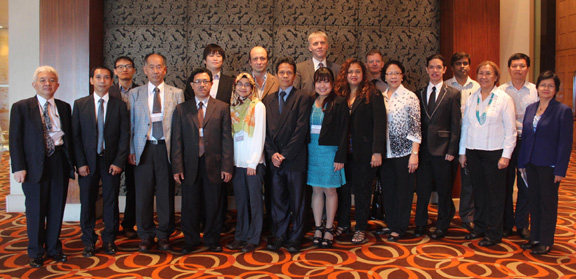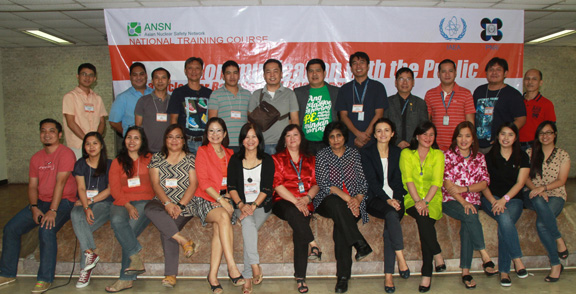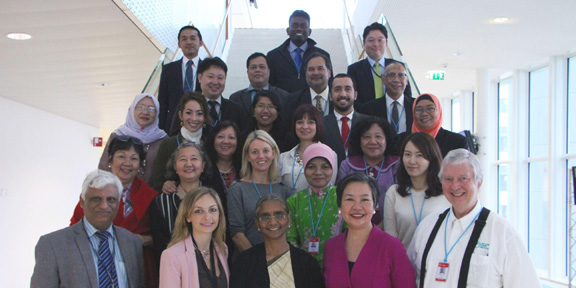ANSN Annual Meeting and Regional Workshop on Radioactive Waste Management
- Details

Doing its part in the international effort to improve radioactive waste management in the Asia-Pacific region, the Philippines, through the Philippine Nuclear Research Institute – Department of Science and Technology (PNRI-DOST), hosted the annual meeting of the Asian Nuclear Safety Network (ANSN) Radioactive Waste Management Topical Group and the ANSN Regional Workshop on Field Data Acquisition and Data Processing for the Safety Case of Waste Disposal Facilities from November 5 to 7 at the Crowne Plaza Manila Galleria, Quezon City.
Read more: ANSN Annual Meeting and Regional Workshop on Radioactive Waste Management
National Training Course on Public Communication in Nuclear & Radiological Emergencies
- Details

Recognizing the importance of public communication in a well-coordinated preparation and response to emergencies, the Philippine Nuclear Research Institute-Department of Science and Technology (PNRI-DOST) in collaboration with the International Atomic Energy Agency (IAEA) and the Asian Nuclear Safety Network (ANSN) hosted the National Training Course on Communication with the Public in a Nuclear or Radiological Emergency from October 20-24 at the PNRI compound.
Experts from the IAEA and the Greek Atomic Energy Commission (GAEC) handled the week-long training course, emphasizing the need to keep the public informed and the responding agencies credible and prepared well beforehand in case of a nuclear or radiological emergency.
Read more: National Training Course on Public Communication in Nuclear & Radiological Emergencies
Philippines Pilots IAEA Educational Outreach Program for High Schools
- Details

Taking another opportunity to help develop nuclear science education in the country, the International Atomic Energy Agency (IAEA) has selected the Philippines as one of the pilot countries in launching an outreach program on nuclear science and technology for secondary schools through the collaboration of the Philippine Nuclear Research Institute-Department of Science and Technology (PNRI-DOST) and the Quezon City Division of City Schools of the Department of Education (DepEd).
Under Project RAS/0/065 on Supporting Sustainability and Networking of National Nuclear Institutions in Asia and the Pacific Region, the country was chosen along with Indonesia, Malaysia and the United Arab Emirates in addressing what the IAEA recognizes as a very vital area in reaching out and developing the youth’s interest in nuclear science and technology by adopting the best practices in science education for secondary schools in the region.
Read more: Philippines Pilots IAEA Educational Outreach Program for High Schools
PNRI – DOST Features Advances in Nuclear Science and Technology in 42nd Atomic Energy Week Celebration
- Details

The Philippine Nuclear Research Institute-Department of Science and Technology (PNRI-DOST) will open its facilities to the public and feature the latest advances in nuclear science and technology in the country in the fields of agriculture, industry, medicine and the environment during the 42nd Atomic Energy Week (AEW) celebration on December 8-12, 2014 at the PNRI compound along Commonwealth Avenue in Diliman, Quezon City with the theme, “The Philippines: Moving Forward with Nuclear Science and Technology".
The activities slated for the week-long celebration include the AEW opening ceremonies on December 8; technical sessions on December 9 and 10; the Philippine Nuclear Science Quiz (PNSQ) for high school students on December 11, and closing/awarding ceremonies with A Night at PNRI on December 12.












































